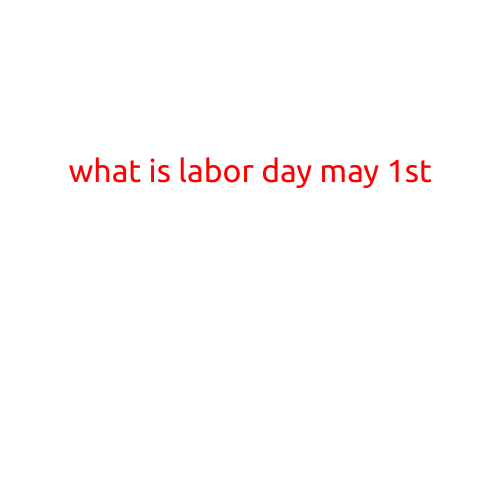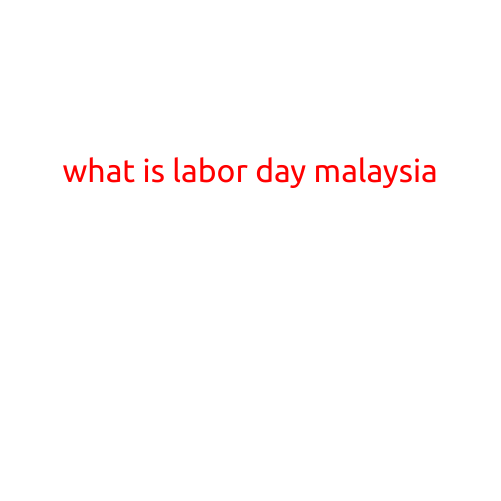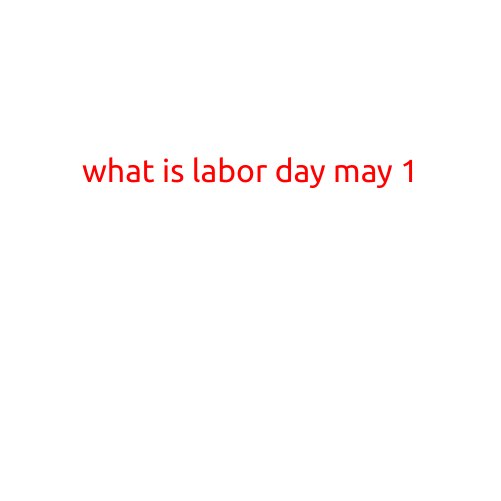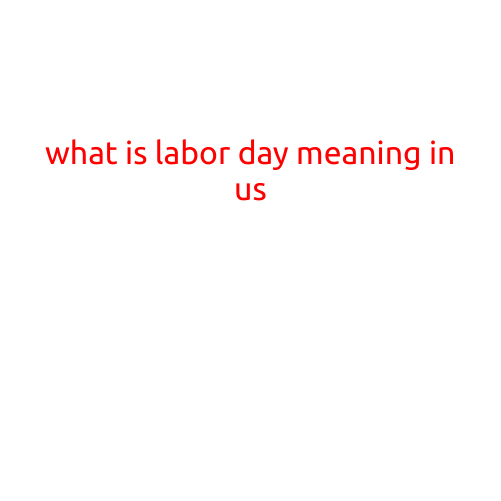
What is Labor Day: Understanding the Significance of May 1st
May 1st is a significant day across the world, commemorating the struggles and sacrifices of workers and laborers. Known as Labor Day, this international workers’ day is celebrated in many countries, including the United States, Canada, Mexico, and several European nations. But what is Labor Day, and how did it come to be?
A Brief History
The idea of Labor Day originated in the United States in the late 19th century, during a time of great industrialization and social change. As workers’ rights and working conditions became a major concern, protests and strikes spread across the country. In 1886, American unions and labor organizations joined forces to demand better pay, shorter working hours, and better working conditions.
On May 4, 1886, a labor protest in Haymarket Square, Chicago, turned violent, resulting in the deaths of eight police officers and four workers. The tragic event led to widespread outrage and calls for change. In 1887, the United States Congress declared May 1st as Labor Day, a national holiday to honor the struggles and achievements of American workers.
International Labor Day
As the concept of Labor Day spread, other countries began to celebrate the day on May 1st as an international workers’ day. The idea gained traction in Europe, particularly in Germany, where the Socialist Party had been advocating for workers’ rights since the late 19th century. In 1890, the Second International, a global union of socialist parties, officially declared May 1st as International Workers’ Day.
Today, Labor Day is celebrated in more than 130 countries around the world, including Mexico, Canada, and many European nations. While the date and local traditions may vary, the underlying message remains the same: to recognize the importance of workers and their role in building societies.
Modern-Day Celebrations
Labor Day has evolved over the years to become a day not only to commemorate workers’ achievements but also to promote unity, social justice, and human rights. In many countries, May 1st is marked by:
- Rallies and demonstrations: Labor unions and social organizations hold rallies and demonstrations to demand better working conditions, fair wages, and social justice.
- Concerts and festivals: Music festivals, cultural performances, and family-friendly events are organized to celebrate the day.
- Parades: Marching parades and processions are a popular way to mark the occasion, often featuring union leaders, politicians, and community members.
- Worker protests: Strikes, boycotts, and other forms of protest are common on Labor Day, particularly in countries with a strong labor movement.
- Solidarity and international cooperation: The day is used to promote solidarity and cooperation among workers and labor organizations across borders.
Conclusion
Labor Day on May 1st is a significant global event that reminds us of the importance of workers’ rights and the struggles they face. It is a day to remember the sacrifices made by workers and to work towards a more equitable and just society. As we celebrate this day, we are reminded that our collective efforts can lead to positive change and a better future for all.





